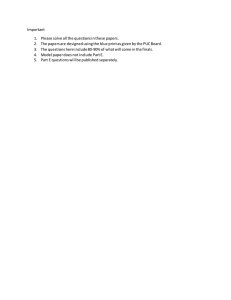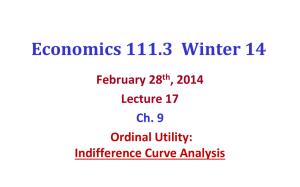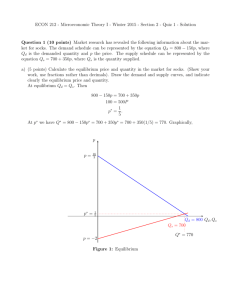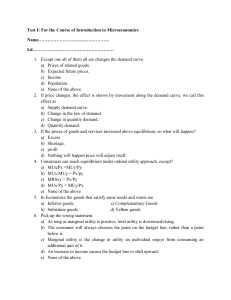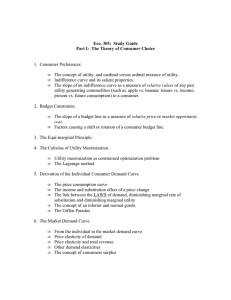Quiz 1
advertisement
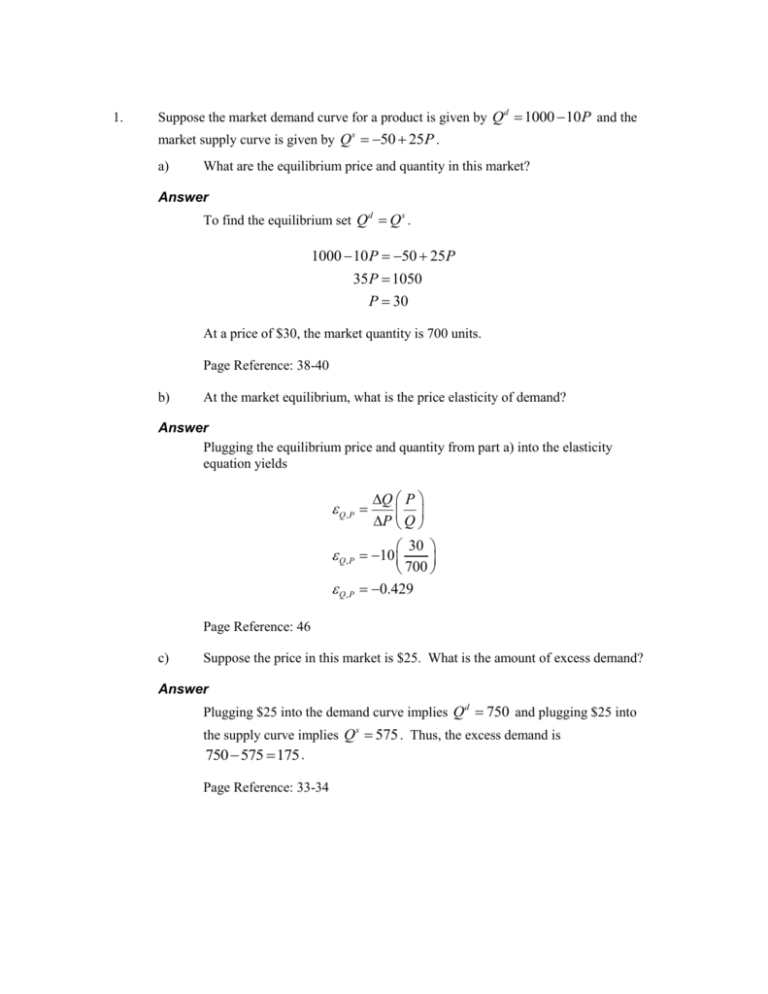
1. Suppose the market demand curve for a product is given by Qd 1000 10P and the market supply curve is given by Q s 50 25P . a) What are the equilibrium price and quantity in this market? Answer To find the equilibrium set Q d Q s . 1000 10 P 50 25P 35P 1050 P 30 At a price of $30, the market quantity is 700 units. Page Reference: 38-40 b) At the market equilibrium, what is the price elasticity of demand? Answer Plugging the equilibrium price and quantity from part a) into the elasticity equation yields Q,P Q P P Q 30 700 0.429 Q , P 10 Q,P Page Reference: 46 c) Suppose the price in this market is $25. What is the amount of excess demand? Answer Plugging $25 into the demand curve implies Q d 750 and plugging $25 into the supply curve implies Q s 575 . Thus, the excess demand is 750 575 175 . Page Reference: 33-34 2. Consider the utility function U ( x, y) 3x 2 5 y with MU x 6 x and MU y 5 . a) Is the assumption that ‘more is better’ satisfied for both goods? Answer Yes, since the marginal utility is greater than zero for both goods, increasing consumption of either good will increase total utility. Page Reference: 83 b) What is MRS x , y for this utility function? Answer MRS x , y MU x 6 x MU y 5 Page Reference: 98 c) Is the MRS x , y diminishing, constant, or increasing as the consumer substitutes x for y along an indifference curve? Answer MRS x , y is increasing as the consumer substitutes toward more x and less y since x appears in the numerator of MRS x , y . Page Reference: 98 d) Will the indifference curve corresponding to this utility function be convex to the origin, concave to the origin, or straight lines? Explain. Answer The indifference curves will be concave to the origin since the marginal rate of substitution is increasing as the consumer substitutes x for y along an indifference curve. Page Reference: 96-99
